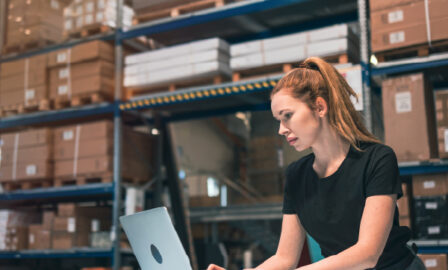How Technology Can Enhance Retail Execution
Retail execution remains a critical component to success for consumer packaged goods (CPG) companies. Despite high trends towards eCommerce, more than 80% of sales still happen in store. How a brand appears in store and how CPG companies understand, leverage, and optimize their in-store activities are crucial to success today and in the future. Technology is a key enabler of many in-store activities, allowing brands greater visibility into consumer behavior and understanding of what’s working, what’s not, and identifying opportunities and risks. Below, we will dive into the different ways technology can be used to help enhance retail execution and take into account some key considerations that CPG companies should review before implementing these technologies.
Key Benefits of Technology for Retail Execution
Inventory Management
For CPG companies, having out of stocks can result in lost sales and weaken brand loyalty. Tools such as IoT, smart shelves, POS systems, sensors, and RFID tags can all help CPG companies predict and manage out-of-stocks (OOS).
IoT can help connect devices like shelves and refrigerators, allowing for real-time monitoring of stocks. Smart shelves, coupled with RFID tags and equipped with weight sensors and cameras, can detect when products are low. It can also immediately notify staff when products need to be reordered, helping to maintain inventory levels. POS systems allow for real-time tracking on the retailer end. These sales numbers can be used to predict demand trends and alert staff when stock is low.
CPG companies can partner with retailers to gain access to more accurate retail inventory levels, helping reduce the chances of OOS, which can increase sales and lower waste.
Compliance
New technology can also help CPG companies ensure retailers comply with advertisements, planograms (POGs), and pricing. Technology today is catching up with the vision for being able to convert pictures to planograms and provide information on compliance to the POG through image capture. Image recognition technology can be used to scan shelves, ensuring feature ads for displays are being executed at the store level.
These shelf scans can also track what items are on the shelf, in what positions, and be compared to POGs for auditing. Additionally, these images can assist with price checks for understanding zone pricing as well as how the price position of a product sits relative to competition. This technology can also turn images into structured data.
By utilizing these tools, CPG companies can ensure compliance for things like displays, POS signage, and product placement on shelves. Retail merchandising teams equipped with smartphones or tablets can transform static pictures or POGs into interactive analytics of the store shelves.
Field Operations
Technology can help improve direct store delivery (DSD), resource allocation, field data, and prioritizing store visits.
When it comes to enhancing DSD, AI can be used for route optimization, finding the most efficient routes for deliveries to minimize travel times. AI can also be used to help score stores based on data from sales, OOS frequency, and compliance issues. These scores can help CPG companies determine which stores need to be prioritized for visits.
Additionally, mobile retail execution apps can be a great tool for ensuring efficiency and compliance. These apps allow field representatives to see product availability and pricing in real-time. They also provide tools to assist with POG compliance, product placement, and shelf management. This can help field representatives ensure that everything is accurate during store visits.
Shopper Habits
New technology can also be used to provide insights into shoppers’ habits. Retailers can install sensors and cameras to analyze shoppers’ movements. AI can be used to turn this information into insights into what shoppers are interested in, where their eye gaze goes, and how long they dwell at the shelf.
For example, several companies offer technology that can link sensors and gather information about shoppers’ paths throughout an entire store. It can collect data on how many customers visit a specific category, how long they spend in the category, and how many visitors to one category also shop another. Advanced applications are also working to provide analytical recommendations to optimize the set both from space allocation and placement.
Merchandising teams should be engaging in understanding shopper dynamics with these tools, allowing them to adapt in-store displays, POS signage, and cross-promotion partnerships based on those shopper patterns and trends.
Key Considerations
For CPG companies, these technologies can offer vast improvements. However, there are still things companies should consider to make the most of these tools.
- Ensure that your company has the right technology and the right resources to support your tools. Too often, we see organizations get excited about technology without thinking through the resources needed to manage, deploy, and optimize those tools. An assessment of the technologies, objectives, and resourcing can help to evaluate and modify plans to best fit the needs and culture of the organization.
- Many CPG companies engage brokers to help them manage retail execution. While broker tools can be very useful for helping CPG companies track data, it’s worth evaluating the broker’s tools relative to the marketplace to ensure the company gets all the capabilities it needs. If a broker isn’t keeping up with current trends, a CPG company may miss out on technology innovations. It’s important that companies do their own research and evaluation to work with their broker on what they are looking for.
- DSD is an important pathway for CPG companies to gain and expand shelf space and distribution. In today’s world, the right technology and infrastructure is critical for DSD route and visit optimization, tracking, auditing of stores, and providing real-time visibility. For CPG companies, technology should play a key role in their DSD function, but those practices must be supported by the organizational structure of the DSD teams and supporting teams in Sales, Category Management, Supply Chain etc.
- Partnerships with retailers and distributors also remain a critical area for CPG companies to find a competitive advantage. Retailers are investing in technology to better understand shopper behavior at the shelf. Cultivating partnerships with 3rd party technology companies and key retail partners can position a CPG company on the cutting edge, allowing for beta tests that can drive relationships with retailers as well as a better understanding of your categories and shoppers.
- The data and insights derived from retail execution provide critical information that needs to be shared and utilized across the organization. Too often, retail teams aren’t integrated enough into the fabric of Brand, Marketing, Category, RGM and Innovation. The people and technology resources provide real-time, leading information on trends, shopper habits, and product opportunities and risks that must be shared and connected with all cross-functional teams.
Looking Ahead
As CPG companies look to improve their retail execution, technology is a vital tool they can leverage. Inventory management, compliance, field operations, and analyzing shopper habits are all areas where technology can help optimize a retail execution strategy. However, they need to be right sized to the organization, have clear goals and objectives for collecting information, and have a strong plan for the resourcing around technology and how the investment will be optimized and managed.
In preparation for entering this space, it’s important for CPG companies to leverage partnerships to maintain a competitive edge. Our team at Clarkston has worked with these technologies and can help your company decide which ones are the best fit for you. Click here to learn more.
Subscribe to Clarkston's Insights
Contributions by Natalie Pollock




